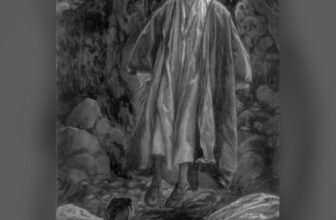
A Deep Analysis of Meaning, Symbolism, and Artistic Legacy
In the vast and turbulent landscape of medieval Christian art, few images strike with the same visceral intensity and enigmatic allure as The Temptation of St. Anthony by Martin Schongauer. This extraordinary engraving, created in the late 15th century, has captivated theologians, art historians, and artists alike for centuries. Not merely a graphic narrative of a saint’s torment, this piece serves as a spiritual map of the soul’s battle against sin, a pioneering work of printmaking, and a cornerstone of Northern Renaissance symbolism. In this article, we will explore the meaning of the work, its symbolism, artistic style, and its enduring influence, while also answering key questions about what is happening in the image and where it resides today.
Who Was Martin Schongauer?
To fully appreciate The Temptation of St. Anthony, it is vital to understand its creator. Martin Schongauer (c. 1448–1491) was a German engraver and painter, widely considered one of the greatest masters of engraving before Albrecht Dürer. Working in Colmar, Alsace (then part of the Holy Roman Empire), Schongauer was renowned for his intricate line work, expressive figures, and ability to imbue even the most grotesque scenes with a sense of poetic harmony. His engravings were widely circulated across Europe, influencing both his contemporaries and generations of artists to come.
Schongauer was also deeply religious, and his art often reflects the intense devotional character of late medieval piety. In this climate of introspection, penance, and spiritual warfare, The Temptation of St. Anthony emerges as one of the most profound visual meditations of the era.
What Is The Temptation of St. Anthony All About?
The Temptation of St. Anthony illustrates a famous episode from the life of St. Anthony the Great, a 3rd-century Christian monk and one of the founders of monasticism. According to The Life of Anthony by Athanasius of Alexandria, Anthony retreated into the Egyptian desert to lead a life of prayer and solitude. During his spiritual journey, he was beset by demonic visions and physical assaults, tests of his faith and devotion.
Schongauer’s engraving captures one of these trials with striking immediacy. The scene shows the saint suspended mid-air, his serene face in sharp contrast to the grotesque mob of demons that assault him. Unlike many contemporary works that ground such events in a physical landscape, Schongauer opts for a flattened, ethereal backdrop, suggesting a spiritual realm rather than a worldly one. This choice heightens the sense that the battle being waged is not of flesh and blood, but of spirit and soul.
What Is Happening in the Painting?
The image is dynamic and violent. St. Anthony appears to be floating, his robes flailing as if caught in a storm. Around him swarm at least nine demonic creatures, each rendered with a terrifying mix of anatomical realism and nightmarish invention. One has a fish’s body and a beak-like snout; another combines insect wings with the talons of a bird; yet another seems to sprout reptilian scales and horns.
These demonic beings claw at Anthony, pulling his garments, biting his limbs, and dragging him down. And yet, the saint remains calm. His facial expression is one of composure and inner peace. He is not struggling against his attackers; rather, he endures. This is the critical theological point: Anthony does not defeat the demons through violence, but through steadfast faith. The demons, embodiments of lust, pride, despair, and rage, have no power over a soul that has truly submitted to God.
This moment, though violent, is ultimately one of triumph. In enduring the temptation without succumbing, Anthony becomes a model of Christian fortitude.
Symbolism in The Temptation of St. Anthony
Schongauer’s work is replete with layers of symbolism, much of it rooted in the religious and psychological ideas of the late Middle Ages. The most immediate symbols are, of course, the demons themselves.
1. The Demons
Each demonic figure represents a different type of temptation or vice. For example:
The reptilian creature may symbolize base instincts, associated with the bodily appetites.
The bat-winged demon could represent despair or fear, often associated with the night and the unknown.
The fish-bodied creature perhaps suggests gluttony or temptation through the senses.
The diversity of their forms is symbolic of the many faces that sin can wear. They are hybrids of animals and fantastical beasts, indicating their unnatural and chaotic nature. They do not belong to God’s ordered creation, and thus their distorted bodies reflect their spiritual disorder.
2. St. Anthony’s Calm Face
His serenity is symbolic of divine grace. Despite the violence inflicted upon his body, his soul remains unshaken. This duality, external turmoil and inner peace, echoes Christian ideals of martyrdom and sanctity.
3. The Aerial Composition
By placing Anthony mid-air, Schongauer removes him from earthly space, situating the event in a spiritual dimension. It also alludes to ascension, the idea that through trial and suffering, one can rise closer to the divine.
4. The Lack of Background
The near absence of a defined background shifts the viewer’s focus entirely to the struggle. This blankness is symbolic too: it strips away all distractions, isolating the viewer and the saint in the immediacy of the trial. It invites contemplation, not observation.
Interpretation: A Spiritual and Psychological Reading
The power of The Temptation of St. Anthony lies not just in its technical brilliance, but in its emotional and spiritual resonance. While grounded in a specific religious narrative, the engraving speaks to universal human experiences: fear, isolation, perseverance, and redemption.
A Theological Message
For devout Christians of Schongauer’s time, the engraving would serve as a meditation on the soul’s journey. It reinforces the idea that temptation is part of the path to sanctity. Anthony is not punished or abandoned, he is tested. His victory is not loud or glorious, but quiet and interior.
A Psychological Lens
From a modern psychological perspective, the demons can be seen as projections of internal struggle. The image anticipates later ideas about the unconscious mind, how inner fears and desires can take on monstrous forms. Anthony’s ability to remain calm amidst this chaos is a testament to inner strength and self-mastery.
Artistic Style and Innovation
The Temptation of St. Anthony is not a painting in the traditional sense, it is an engraving, a form of printmaking. Engraving involves carving a design into a metal plate, inking it, and pressing it onto paper. Schongauer was one of the first artists to elevate this medium to the level of fine art.
Northern Renaissance Aesthetics
While Italian Renaissance artists pursued idealized human forms and classical balance, Northern artists like Schongauer were more interested in detail, texture, and symbolic meaning. His work reflects the gothic sensibility that was still prominent in the Germanic regions at the time, with its emphasis on moral narratives and the grotesque.
Schongauer’s line work is meticulous. The curves of St. Anthony’s robe, the texture of the demons’ skin, and the sense of movement are all achieved through expert use of cross-hatching and line variation. It’s no surprise that a young Michelangelo was so captivated by this engraving that he reportedly created a painted copy of it.
The Legacy of the Work
Martin Schongauer’s The Temptation of St. Anthony is not just a masterpiece of its time, it has had a lasting impact on the visual arts. Its influence can be traced through:
Albrecht Dürer, who admired Schongauer’s skill and pushed engraving even further.
Hieronymus Bosch, whose surreal and moralizing images of temptation echo Schongauer’s grotesque creatures.
Michelangelo, who used the engraving as a study piece.
Modern and surrealist artists, including Max Ernst and Salvador Dalí, who each created their own interpretations of the theme.
In many ways, the image set the stage for centuries of art that explored the boundary between the spiritual and the monstrous, the seen and the unseen.
Where Is The Temptation of St. Anthony Painting Today?
Because Schongauer’s work is an engraving, multiple impressions were made and distributed across Europe. As a result, copies of The Temptation of St. Anthony exist in several major institutions.
One of the best-known impressions is housed in the Metropolitan Museum of Art in New York City, within the Department of Drawings and Prints. Other impressions are held by:
The British Museum, London
The Albertina, Vienna
The Bibliothèque nationale de France, Paris
These prints are usually stored under careful conservation conditions, due to the fragility of the paper and the age of the works. They are sometimes displayed in rotating exhibitions about Renaissance printmaking or religious art.
The Temptation of St. Anthony by Martin Schongauer is far more than a religious illustration, it is a visual poem of spiritual endurance. It blends horror and grace, chaos and clarity, to create a deeply moving and theologically rich image. Through the medium of engraving, Schongauer brought a scene of ancient asceticism into the living rooms and prayer cells of 15th-century Europe, and into the imaginations of generations that followed.
Whether viewed as a religious allegory, a psychological portrait, or a masterpiece of technical skill, The Temptation of St. Anthony endures as a landmark in the history of art. It invites us not only to witness the saint’s trial but to reflect on our own battles with inner darkness, and to find, like Anthony, a calm eye in the storm.




